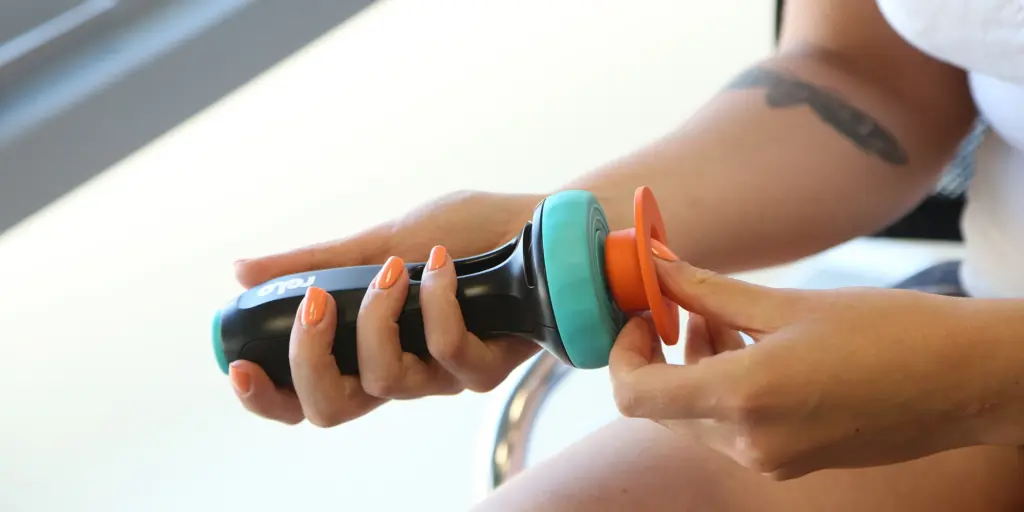Self-administered subcutaneous injections are critical to managing many chronic conditions, but they can present significant challenges, particularly for individuals with physical or cognitive impairments or those who fear needles. In response to this, 42T developed a demonstrator that showcases how thoughtful engineering and user-centric design can overcome real-world healthcare barriers.
Making injections simpler, safer, and more accessible
The demonstrator was designed to simulate the user experience achievable by the innovative mechanical approach. It highlights a solution that bridges the gap between basic mechanical injectors and fully motorised, high-cost alternatives.
The challenge: Bridging usability, perception, and cost
Auto-injectors on the market today are often not designed with the user in mind, many lack comfort and stability during use, falling broadly into two categories: low-cost, spring-loaded devices with basic functionality, and high-end electromechanical systems that prioritise automation over user experience. 42T sought to demonstrate how intelligent design could deliver much of the benefit of more sophisticated systems, while retaining cost-effectiveness and simplicity.
The demonstrator needed to:
- Automate key steps of the injection process.
- Conceal the needle before and after use.
- Provide clear feedback to the user (e.g. sound on completion).
- Be easy and safe to operate, even for users with impairments.
- Enable hygienic, touch-free cartridge disposal.
- Delivers the drug more effectively through mechanical timing.
- Comfortable in-hand and to use on the skin.
- Broad base design ensuring added stability.
- Overall non-threatening, approachable aesthetic.
What we did
We designed and developed a user-centric autoinjector through design-led innovation
The development journey followed a structured, collaborative approach:
Simulated injection cycle – The device demonstrates a full injection cycle: cap removal, needle insertion, drug delivery simulation, completion signal, needle withdrawal, and cartridge ejection.
Concept development – Early sketches and UX exploration to understand user fears and workflow needs and establish a mechanical concept.
Mechanical design – Sophisticated and cleverly engineered internal mechanism, developed through precision CAD modelling to validate the full workflow.
Prototype manufacture – Using our prototyping expertise and model making to bring concepts to life.
Team collaboration – Multi-disciplinary workshops, usability testing, and refinement ensured the design aligned with real user needs.

Results
With user comfort driving every design decision, this device combines smart engineering with practical problem-solving, a compelling way to engage stakeholders across healthcare and consumer health.
“Our goal was to remove barriers to self-injection by creating a device that was intuitive, non-threatening, and genuinely easier to use. By focusing on user insight from the start, we delivered an innovative auto-injector concept that balances engineering precision with real-world usability.”
The outcome: A visually refined, mechanically sophisticated, user-centric autoinjector
By the end of the project, 42 Technology had delivered a device that:
- Showcases an automated injection sequence without powered actuation.
- Maintains needle concealment before and after use to ease needle anxiety.
- Provides auditory feedback to signal injection completion.
- Enables hygienic cartridge disposal.
- Offers a tangible representation of how user experience and engineering excellence can meet in cost-effective, scalable ways.
Real-world relevance: A step forward in patient-centred care
While developed as a demonstrator, the design has clear applications:
- Empowering home-based treatment for chronic disease.
- Supporting elderly or disabled users with limited dexterity.
- Enabling safer, more intuitive consumer health experiences.
The project is a compelling example of how 42T blends mechanical innovation, usability insights, and industrial design to tackle meaningful healthcare challenges, making life easier, safer, and more comfortable for users everywhere.
We’re now actively engaging with industry partners to explore real-world applications and future developments. The technology will be showcased at the SAE Injectable Drug Delivery Conference in London (24 – 25 June 2025).
Still curious about the future of drug delivery devices?
Discover how user-centric design for drug delivery devices could revolutionise the way we help patients practise easier self-applied injections in their home. Read Andy Pidgeon’s article as he explains the value of simplicity and usability within auto-injectable devices: Smart Enough: Designing Drug Delivery Devices That Put Patients First published by ONdrugDelivery, June issue 174.

